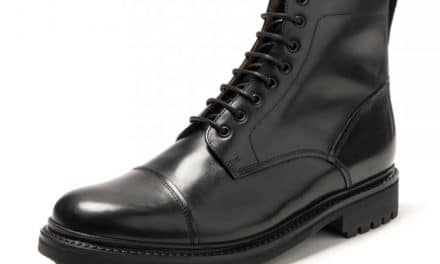Not everyone gets the opportunity to wear a suit every day. And for most of us, save for the odd wedding or job interview, we rarely get the chance to get dressed up.However, when given the chance to dress in all your finery, this should never act as an excuse to do it poorly. A badly worn suit can absolutely pull the style out of any situation, and can make you look less impressive than if you’d just settled for a smart t-shirt and jeans.
So, for those of you who are relatively new to the suit wearing world, we’ve put together five unwritten (and unbreakable) rules for wearing a shirt and suit.
Never button the bottom button of your suit jacket
Suit jackets very rarely feature a large number of buttons for one reason: they’re not a coat. Most suit jackets feature two or three buttons at most, and it’s essential you only close the middle button as it’s the only one tailored to be closed. If the weather’s making you feel like you need to button them all, it’s probably worth investing in some more suitable outerwear.
Also, be sure to open your jacket again when seated, otherwise you’ll cause creases and ruin your look.

Always button the top of your shirt
Only at the end of the night when the drinks are flowing and the music’s loud is it acceptable to loosen your collar and take that top button out. Until then, make sure it stays firmly fastened. Pulling your tie tight and trying to cover it won’t make a difference either.
If your collar’s too tight to button up comfortably, you’ll need a larger shirt size. Constantly battling with off-the-peg shirt collar sizing? You could always try a made to measure shirt option instead.

Your tie should end at or just before your belt
If the thicker part of your tie is sitting below your belt line, be sure to re-tie it and make sure it ends at, or just shy of your belt line. Likewise, if it’s sitting half way up your torso, re-tie it and let it sit lower. If you’re short on material, it might be worth purchasing a longer, more suitable tie.
The tie is designed to draw eyes towards the centre of the body and add uniformity to an outfit. As Oscar Wilde once wrote in The Picture of Dorian Gray: “With an evening coat and a white tie, anybody, even a stock broker, can gain a reputation for being civilized.” Be sure to get yours right.

Sleeve cuffs should be exposed by around ½ an inch
If your jacket sleeves cover your hands, it can end up looking like you borrowed it from someone twice your size. On the other hand (sorry), if you can’t move around without consistently showing off your wrists, your jacket sleeves may be too long. A recommended length is around ½ an inch, although there’s no need to be transfixed on the number. Providing only a small amount of shirt cuff is on show and doesn’t continuously appear/disappear like a bad magic trick, you should be just right.

Keep shirt collars small if you’re without a tie
Providing the context of the event calls for it, going tieless can be incredibly stylish, as long as you pull the rest of the outfit off well. Your shirt collar acts as an important frame to your face, but without a tie to pull it together, the collar of your shirt can flatten and flop around underneath the structure of your jacket and look unkempt.
Be sure to wear a shirt that’s not solely designed to be worn with a tie, for instance something with a smaller collar that stands up without issue. As there’s no tie to draw the eyes away from your collar, be sure the fit is perfect. A collar gap between your jacket’s lapels and your shirt’s collar can signify an ill-fit.
Spending a little more, and taking a little extra time planning can keep you covered for years to come, so don’t rush your wardrobe choices. Smart attire is often seen as an investment as great tailoring can serve you well for a variety of events.
What are your thoughts? And what do you think about wearing a suit? Let us know, and be sure to share it with your friends!















